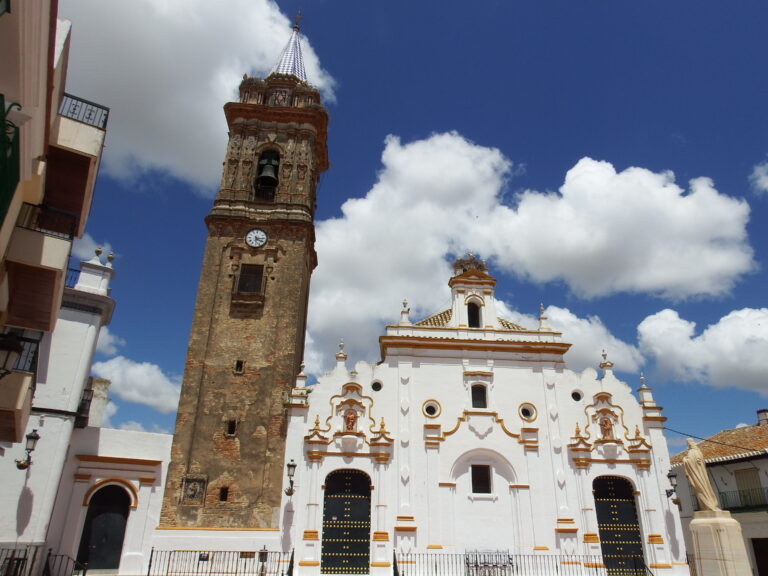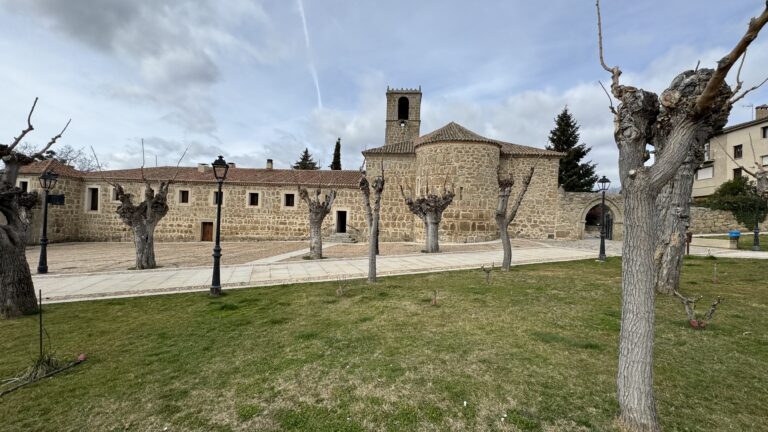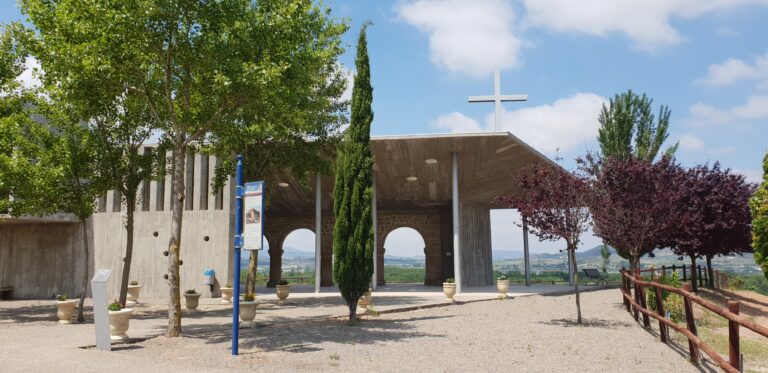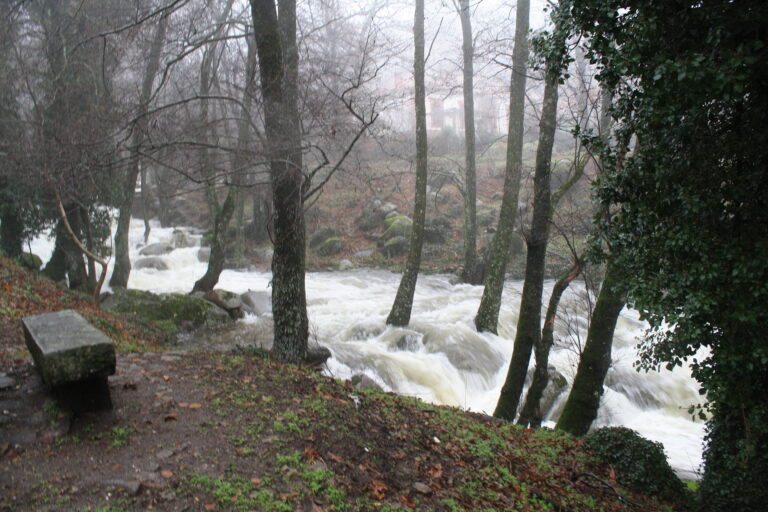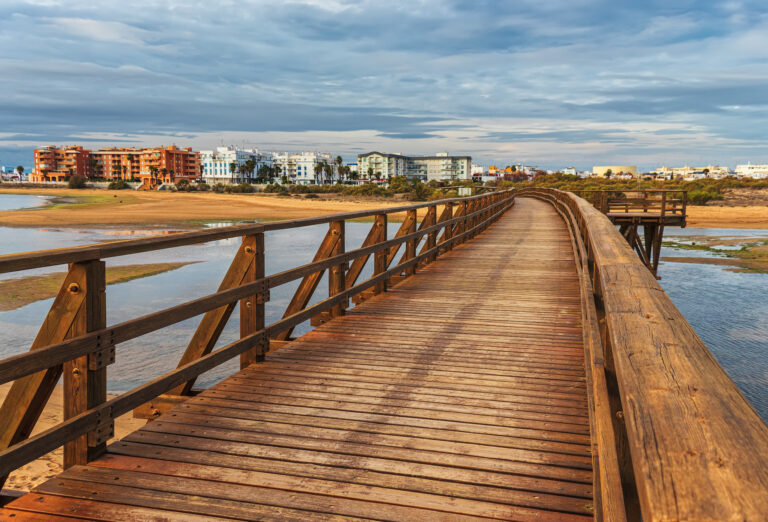Zufre: A Millennial Enclave in the Heart of the Sierra de Huelva
Perched high on a rocky ridge, overlooking the holm oak and cork oak groves that cover the Sierra de Aracena, the village of Zufre is one of the most unique and picturesque destinations in Huelva. With just 700 inhabitants and a town centre declared a Site of Cultural Interest, this small municipality offers a journey back in time through narrow streets of Islamic heritage, vertiginous viewpoints, a surprising monumental heritage and a natural wealth that invites you to relax and go hiking. If you are planning a getaway to the north of Huelva, we will tell you what to see in Zufre and why it is an essential stop.
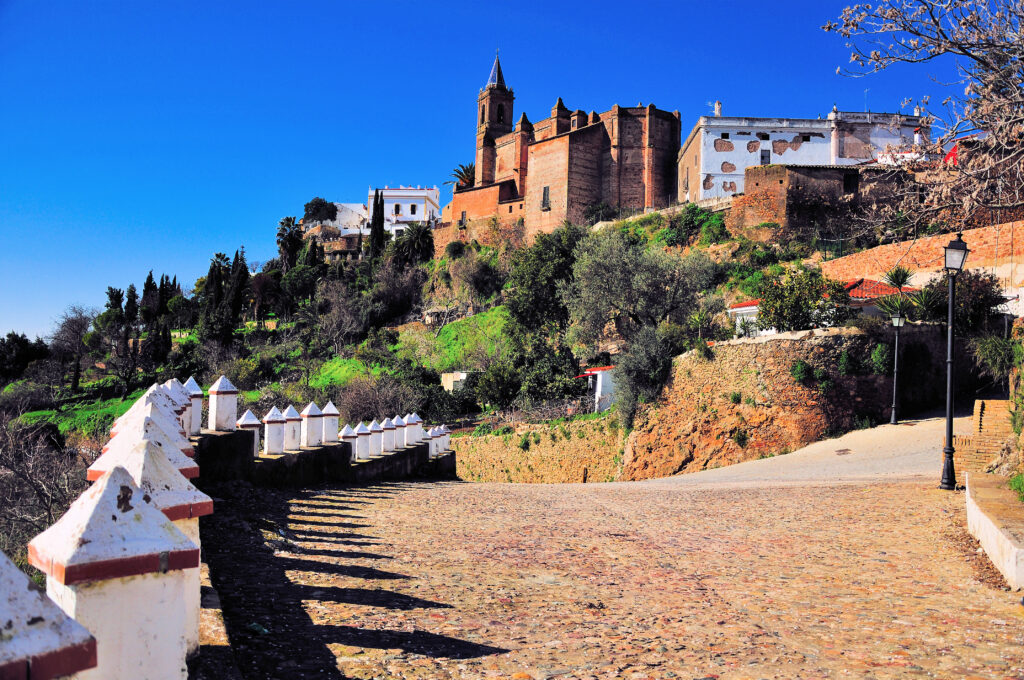
A balcony overlooking the Sierra de Aracena
Zufre is located on the southern slope of the La Solana hill, at an altitude of 446 metres, within the Sierra de Aracena and Picos de Aroche Natural Park. Its municipal area covers more than 340 km², making it the third largest in the province, behind only Almonte and Aroche. From the town centre, you can enjoy unbeatable views of the valley through the Rivera de Huelva, a landscape of gentle mountains, olive groves and pastures that make this corner a true rural retreat. The surroundings are ideal for lovers of hiking and active tourism, with numerous routes that run through holm oaks, cork oaks and historic springs.
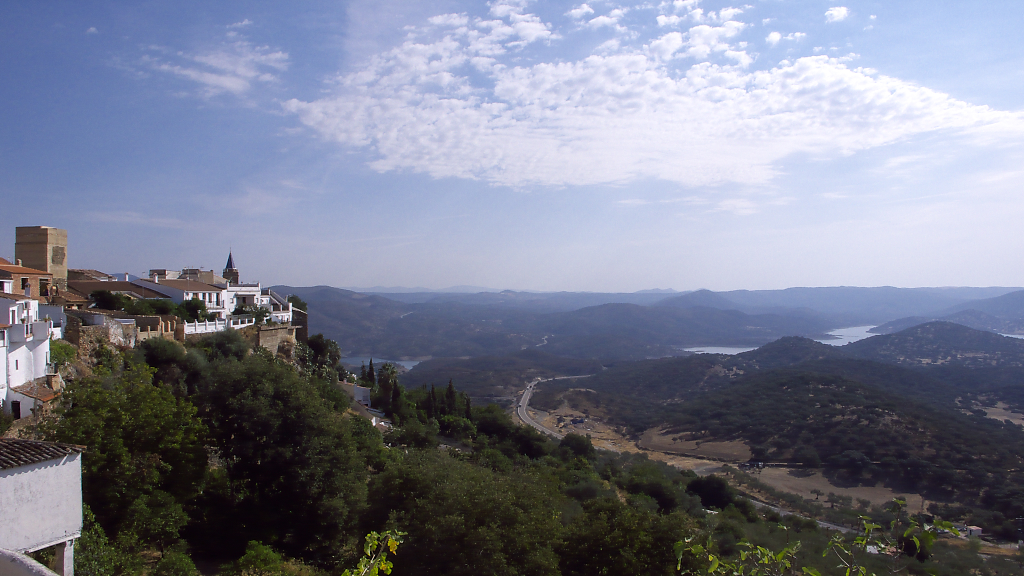
Ancient roots: a village with history
Zufre is one of the oldest urban settlements in Andalusia. Archaeological remains from the Bronze Age have been found in the surrounding area, such as the Trastejón site. In Roman times, there were several enclaves linked to mining, although the real urban boom came with Al-Andalus.During the Islamic period, Zufre — then known as Al-Jusani or Sutefie — became one of the main towns in the mountains, reaching an estimated population of 6,000.
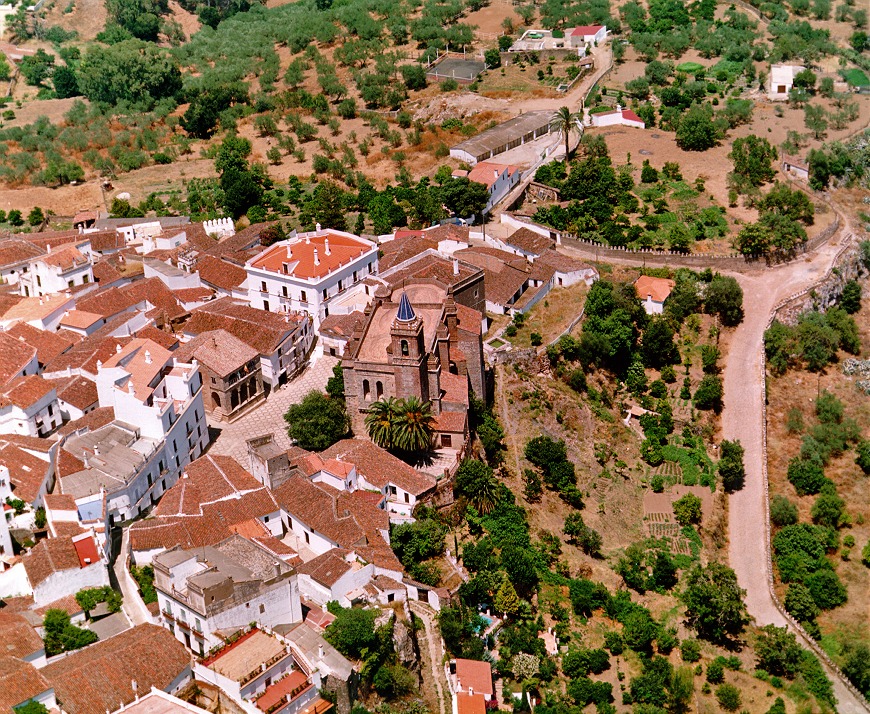
Its urban layout, with narrow streets, ramparts and unexpected curves, still retains the essence of that fortified city surrounded by 12th-century Almohad walls. Remains of the walls and towers, such as the imposing Torre de las Harinas and Torre del Alcahuete, have been converted into viewpoints overlooking the abyss. The Christian conquest came in 1246, and Zufre became part of the so-called ‘Banda Gallega’, a strip of land repopulated by Galicians and Leonese for defensive purposes against Portuguese incursions. The historic centre that we see today took its definitive shape between the 12th and 18th centuries.

Monuments not to be missed
Church of the Immaculate Conception
The parish church is one of the emblems of Zufre. It stands on the remains of an ancient mosque and a primitive 14th-century Mudejar temple. The current church was built in the 16th century by Hernán Ruiz II, master builder of Seville Cathedral and designer of the Giralda, and underwent extensive renovation after the 1755 Lisbon earthquake, when its current tower was added.

Town Hall and Fuente del Concejo
The Town Hall stands in the same square, an elegant Renaissance building completed in 1570 and also attributed to the circle of Hernán Ruiz. Inside, it preserves three 16th-century stone seats, believed to have belonged to a travelling court of the Inquisition. Opposite the building, the Fuente del Concejo fountain, with its characteristic triton face, supplied water to the vegetable gardens through a medieval irrigation system.
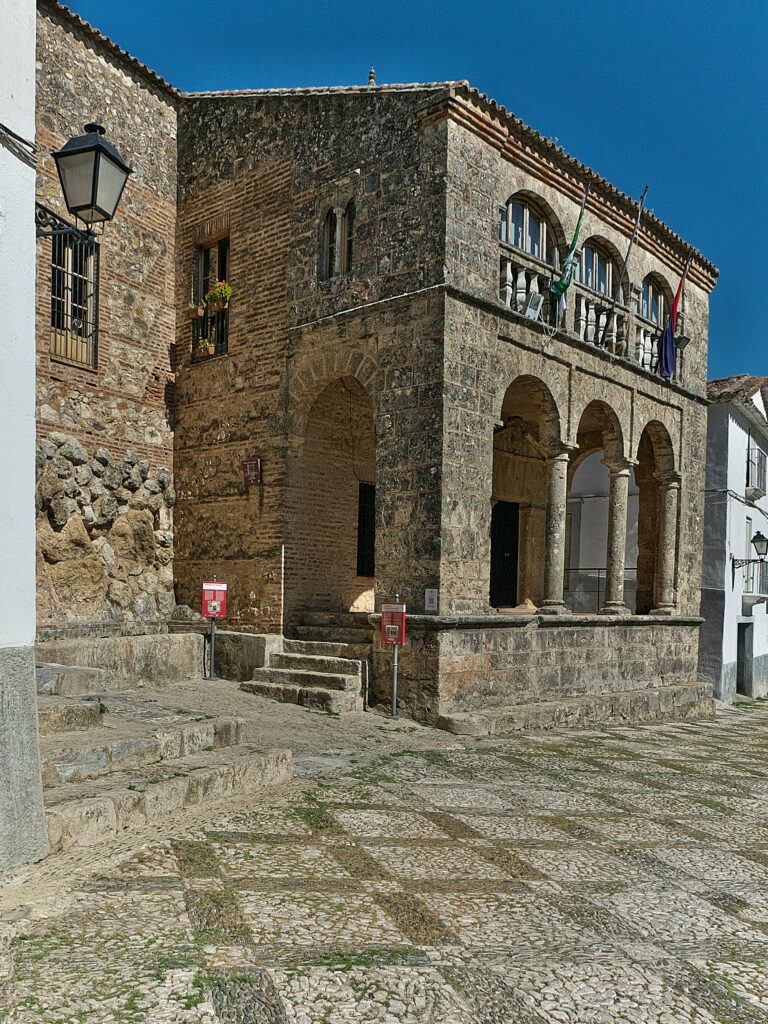
Remains of the walls and the Torre de las Harinas
The remains of the Almohad wall (12th and 13th centuries) that surrounded the town are still visible, although in isolated sections and hidden among the buildings. The restored Torre de las Harinas, a solid defensive tower about 12 metres high, dating from the 12th century, is the most outstanding remnant of this ancient fortress. Other towers, such as those on Carnecería Street, were transformed in the 18th century into impressive viewpoints offering panoramic views of the valley. The Torre del Alcahuete, popularly known as the ‘torreón’, is also preserved.
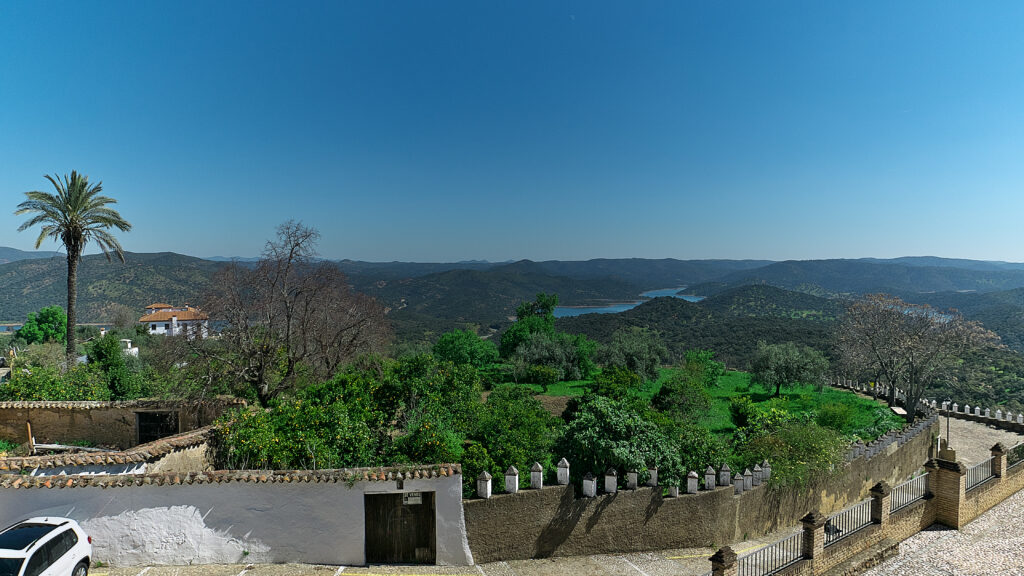
Streets with an Andalusian soul, hermitages and popular devotion
The Paseo de los Alcaldes José Navarro y Andrés Pascual, a park and viewpoint located on the edge of the town centre next to the old wall, is a place for meeting and contemplation. Under the shade of its mulberry trees and the babbling of an inexhaustible circular fountain, you can enjoy the widest and most beautiful views of the mountains, with a haughty viewpoint that seems to hang over the abyss. Zufre also has a historic bullring, an interesting building inaugurated in 1886 and built by the Portuguese master builder Domingo Alfonso de Amorín, located opposite the promenade.
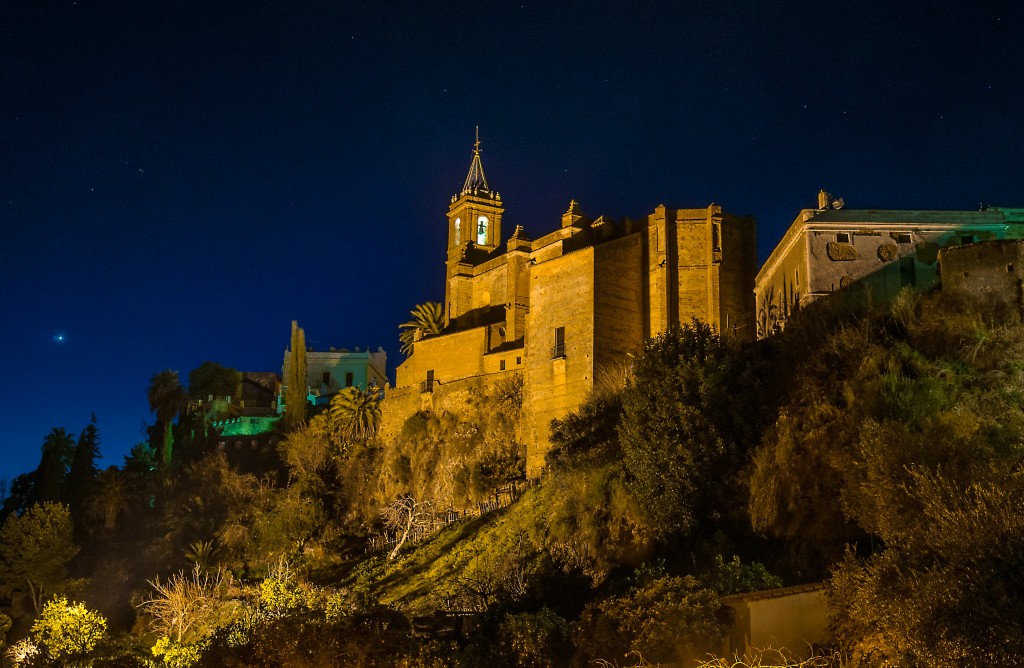
Outside the town centre, hermitages dot the landscape, each with its own history and charm. The hermitage of Santa Zita, a small Mudejar-style building carved out of the rock in the 15th century on the old road to Santa Olalla, and the hermitage of Nuestra Señora del Puerto, located in the Sierra Vicaría 12 kilometres from the town, are two examples. The latter, characterised by its diaphragm arches and a porticoed atrium added in the 1950s, is the epicentre of the pilgrimages in honour of the patron saint. The Humilladero de San Sebastián is another place of religious interest.
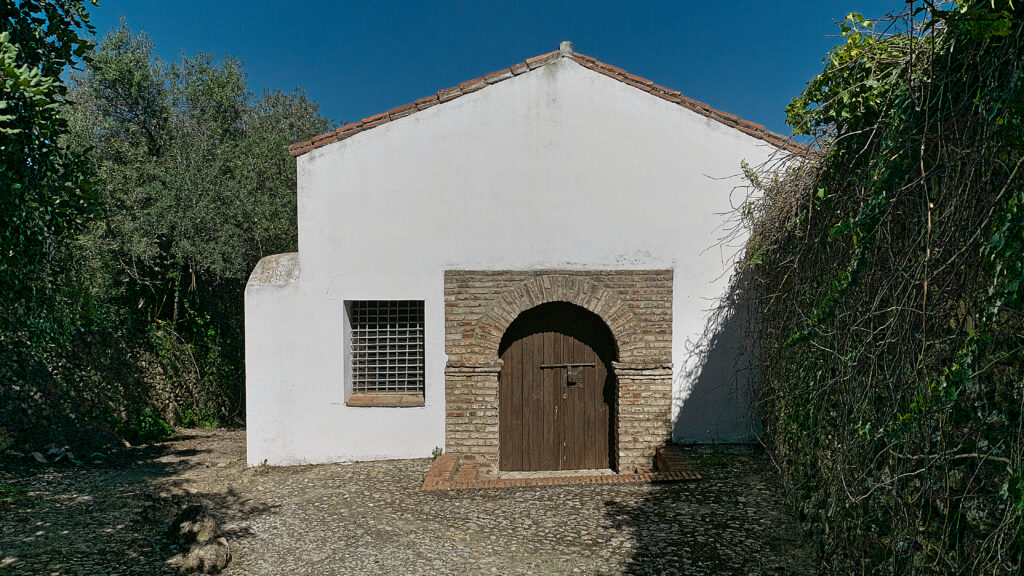
Water Route: fountains, washing places and landscapes
Zufre is also a land of springs. Its municipal area abounds in fountains and public washing places, many of which form part of an attractive ‘Water Route’. Some of the highlights are:
- Lavadero de los Linares (1909), the work of the Portuguese master builder Amorín.
- Fuente del Paseo de los Alcaldes, decorated with ceramics from Triana.
- Fuente-pilar de la Calle Larga (19th century).
- Fuente de las Mimbreras, located on the outskirts, dating from the 16th century.
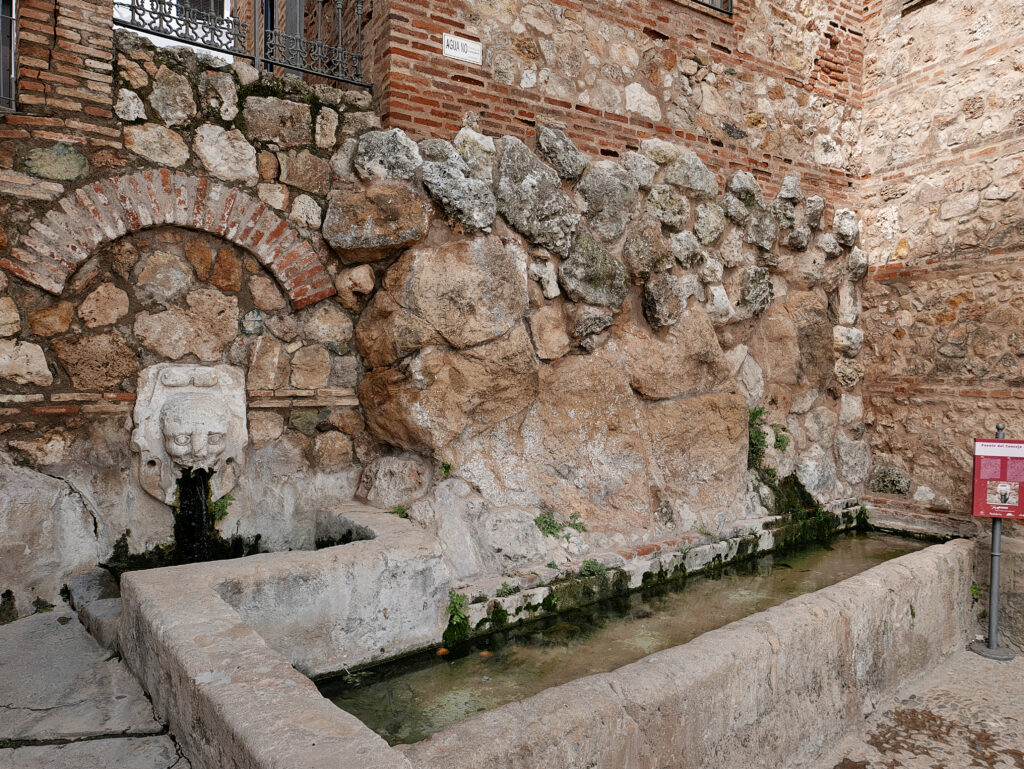
Zufre Reservoir: mountains and beach
On the outskirts of the village, in Puerto de las Eras, there is a magnificent view of the Zufre reservoir, the largest built in the Rivera de Huelva basin. The dam, inaugurated in 1987, supplies water to Seville and its metropolitan area. In good weather, the surrounding area is perfect for outdoor leisure activities such as fishing, walking, stargazing or simply enjoying a swim in the designated areas.
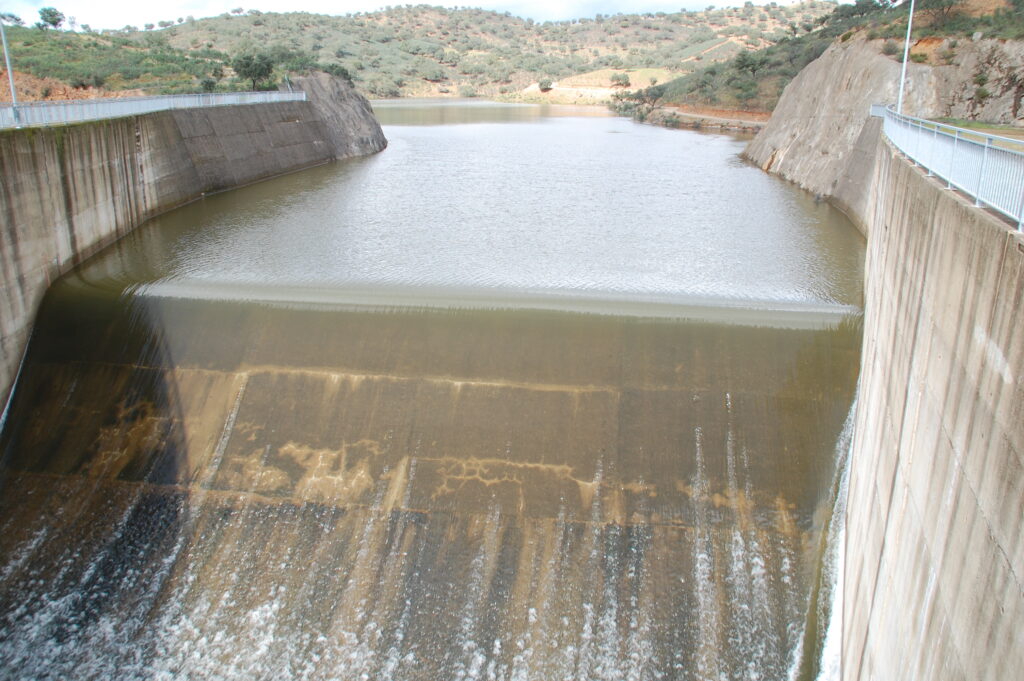
Near the reservoir is also the old route of the Cala–San Juan de Aznalfarache mining railway, whose station was partially submerged by the reservoir. Today it is an example of industrial architecture recovered by history.

Nature, hiking and rural tourism
Zufre’s location within the Sierra de Aracena and Picos de Aroche Natural Park makes it an idyllic destination for nature lovers and outdoor activities. This protected area, one of the most important in Andalusia, covers the entire north of the province of Huelva, with its pastures, small hills covered with holm oaks, cork oaks, chestnut trees and scrubland, and numerous streams that make up a landscape of extraordinary beauty.
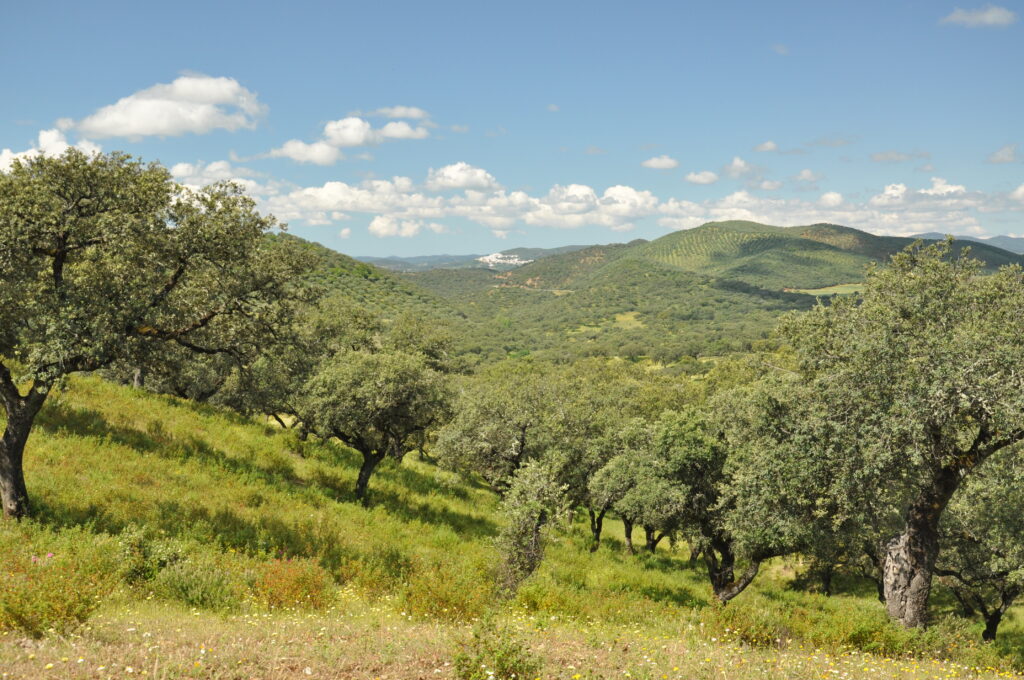
From the town centre itself, there are signposted hiking trails that connect with springs, ancient roads, mule tracks and mountain landscapes that change with each season. In addition, in the vicinity of the reservoir is the La Vicaría rural complex, a group of equipped rural houses where you can enjoy activities such as fishing, horse riding or simply the tranquillity of the surroundings without light pollution, ideal for stargazing.

Festivals and popular traditions: A calendar full of colour
Zufre is a municipality where traditions are lived with intensity. Throughout the year, various popular festivals fill its streets with colour and joy:
- Romerías de la Virgen del Puerto: The first, and most important, is held on the last Sunday in August in honour of Nuestra Señora del Puerto, the town’s patron saint. During this festival, the famous horse races are held through the streets of Zufre, a spectacle that attracts numerous visitors. The second pilgrimage takes place on the second Sunday in September.
- Patron saint festivities: On the first weekend in September, in honour of the patron saint, various cultural, religious and leisure activities take place.
- Holy Week: The processions on Maundy Thursday and Good Friday, with the images of the Virgin of Sorrows, the crucified Christ and the Holy Burial, are moments of profound devotion. The Burning of Judas is a deeply rooted tradition.
- Night of the Candles: One of the most popular festivals in the town, where bonfires are lit and the embers are used for cooking. In the church square, a large candle is lit and children take to the streets with their lit beads.
- May Mass: Held on the third weekend in May, marking an agricultural tradition.
- Oil Fair: An exhibition held over a weekend in January to promote local oil and mountain products, with cultural activities and talks.
- Concert in honour of Saint Cecilia: In honour of the patron saint of music.
- Tapas Fair: An opportunity to sample the local cuisine.
- Verbena de San Sebastián.
- Procession of Santa Zita.

Flavours of the mountains
The cuisine of Zufre reflects its natural environment, characterised by the variety and quality of its products. Iberian pork is the king of the table, with exquisite stews, casseroles and young goat. Migas, often accompanied by grilled sardines, are a traditional comforting dish. However, what really sets Zufre’s cuisine apart, especially in autumn and spring, is the presence of mushrooms. With special mention of the famous gurumelo, but also varieties such as tana, gallipierno, josefita and tentullo, mushroom-based dishes are a delight for the palate.

In the summer months, gazpacho, made with fresh local vegetables, takes centre stage, offering refreshing relief from the heat. In the various bars and restaurants in the town, you can sample these specialities, which represent the essence of mountain cuisine, based on the quality of local products and recipes handed down from generation to generation.
Itinerary Suggestions
Here are some suggestions to add to your itinerary, which we have added to the map:
- Bollullos Par del Condado: A place steeped in wine and religion. It is 1 hour and 24 minutes away via the A-66 and A-49 motorways.
- Isla Cristina: If you want a place with a beach, this is a good option. It is a 1 hour and 48 minute drive via the A-461, N-435 and A-49 motorways.
- Villarrasa: An inland village with a lot of soul. It is a 1 hour and 16 minute drive via the A-461 and A-493 motorways.
- El Portil: A beach destination that is not too crowded. 1 hour and 35 minutes via the A-461 and N-435 motorways.
- Moguer: Visit the home of Juan Ramón Jiménez. It is a 1 hour and 20 minute drive via the A-461 and N-435 motorways.
Where to stay in Zufre
Zufre is an ideal place for a quiet getaway, and although its range of accommodation is not very extensive, you will find charming options that blend in perfectly with the natural and heritage environment of the village. The accommodation on offer consists of traditional rural houses, most of which preserve the typical architecture of the Sierra de Aracena and offer privileged views of the reservoir or the historic centre.
It is advisable to book in advance, especially on long weekends or weekends, as it is an increasingly popular destination for travellers seeking to escape the hustle and bustle of city life and disconnect in the heart of nature.

Zufre, a village with soul
Zufre is much more than just a pretty village in the Huelva mountains. It is a place where history can be felt in every corner, where nature embraces visitors and where time seems to stand still amid walks, fountains, festivals and landscapes. Ideal for a peaceful, unhurried getaway, discovering its Andalusian heritage, Renaissance architecture and unique natural heritage at every turn. If you are looking for an authentic spot, far from the crowds and full of charm, Zufre awaits you. To make the most of your getaway, here are some useful products you can purchase before your trip so that you are well prepared:
- Hiking shoes
- Snorkel set
- Compact microfibre towel
- Waterproof sun cream
- Polarised sunglasses
- Non-slip flip flops
- Anti-theft backpack
In this article you will find some affiliate links. If you book or buy something through them, you help us to continue creating independent and useful content, at no extra cost to you. Thank you very much for making this possible!
Photo Credits
Below are the photo credits in order of appearance. Royalty-free photos will not be listed below:
- Cover Image: Steve Slater, CC BY 2.0, via Wikimedia Commons
- José Luis Filpo Cabana, CC BY-SA 4.0, via Wikimedia Commons
- Felix.zufre, CC BY-SA 4.0, via Wikimedia Commons
- Jl FilpoC, CC BY-SA 4.0, via Wikimedia Commons
- Jl FilpoC, CC BY-SA 4.0, via Wikimedia Commons
- José Losada, CC BY 2.0, via Wikimedia Commons
- Jl FilpoC, CC BY-SA 4.0, via Wikimedia Commons
- Jl FilpoC, CC BY-SA 4.0, via Wikimedia Commons
- juanjo.arias, CC BY-SA 3.0, via Wikimedia Commons
- Geom, CC BY-SA 4.0, via Wikimedia Commons
- Ricoleta, CC BY-SA 4.0, via Wikimedia Commons
- Donpositivo, CC BY-SA 3.0, via Wikimedia Commons
- Rafatorrescusa, CC BY-SA 4.0, via Wikimedia Commons
